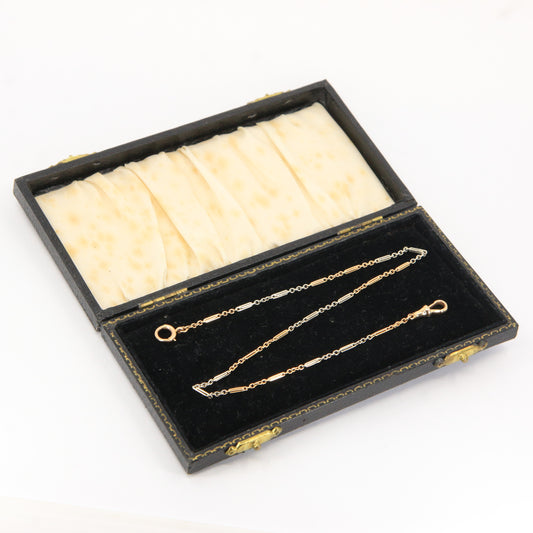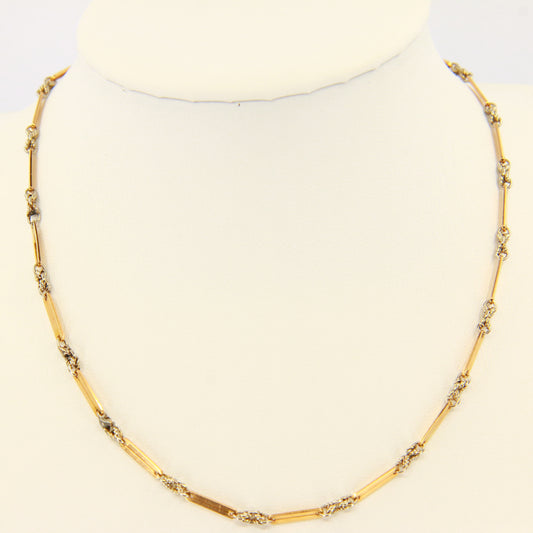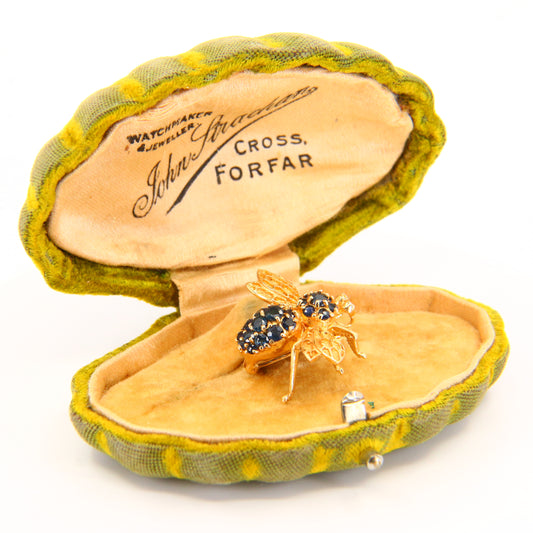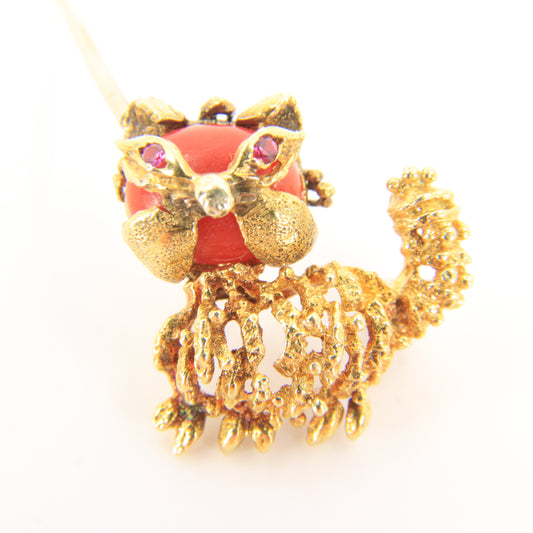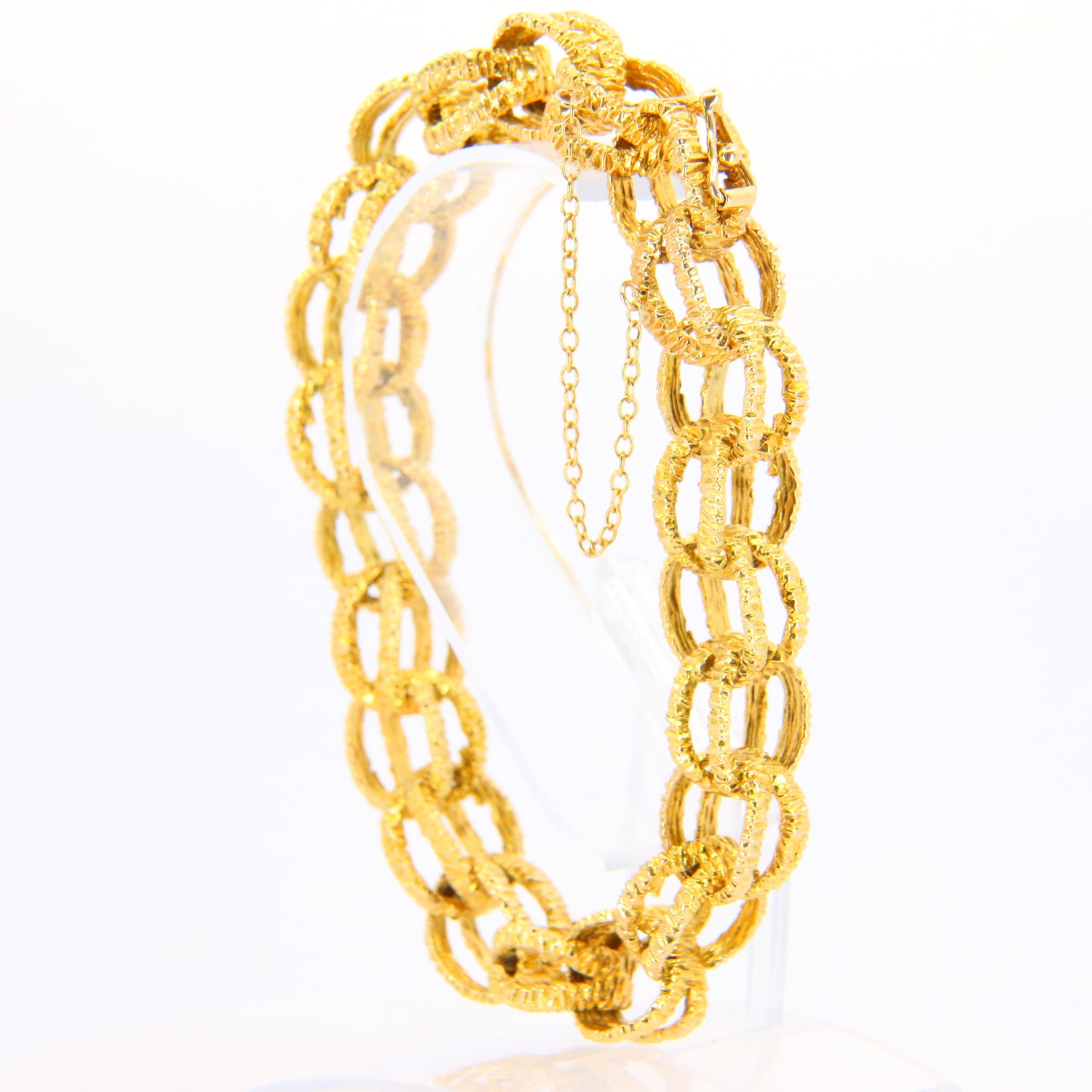
The Antique Jewellery Guide
Explore Antique & Vintage Jewellery Through British History
Jewellery is more than ornament — it’s identity, memory, and a reflection of the times in which it was made. This guide introduces you to the fascinating world of antique and vintage jewellery, with a focus on unique pieces often overlooked by modern buyers: Albert chains, muff chains, watch fobs, trench watches, mourning jewellery, and more.
Whether you’re a new collector, vintage seller, or simply curious, we’ll take you through key types, their uses, and the stories they carry — all from a distinctly UK historical perspective.
Collections:
-
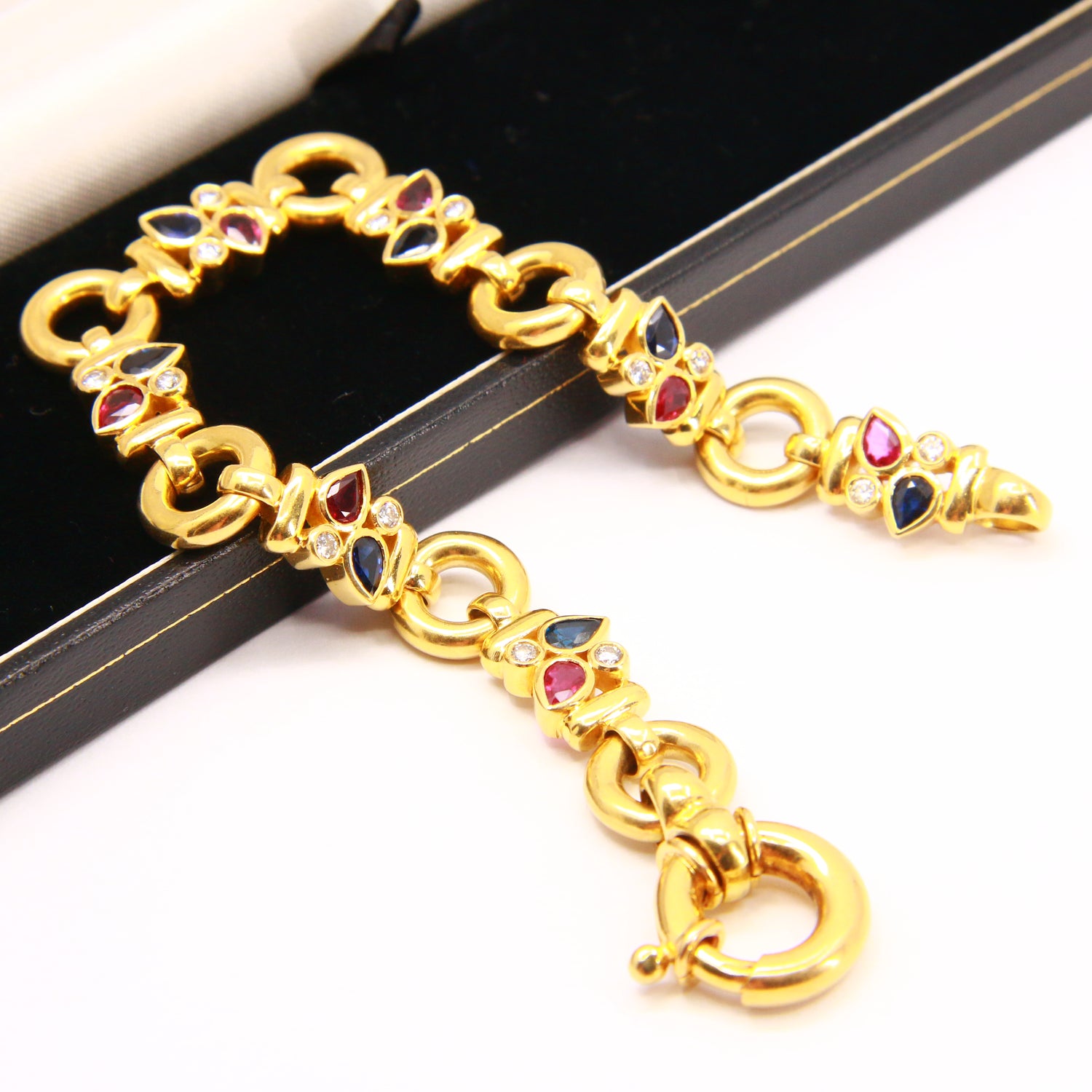
Armbänder und Armreifen
Shop Vintage and Antique Bracelet and Bangles.
-
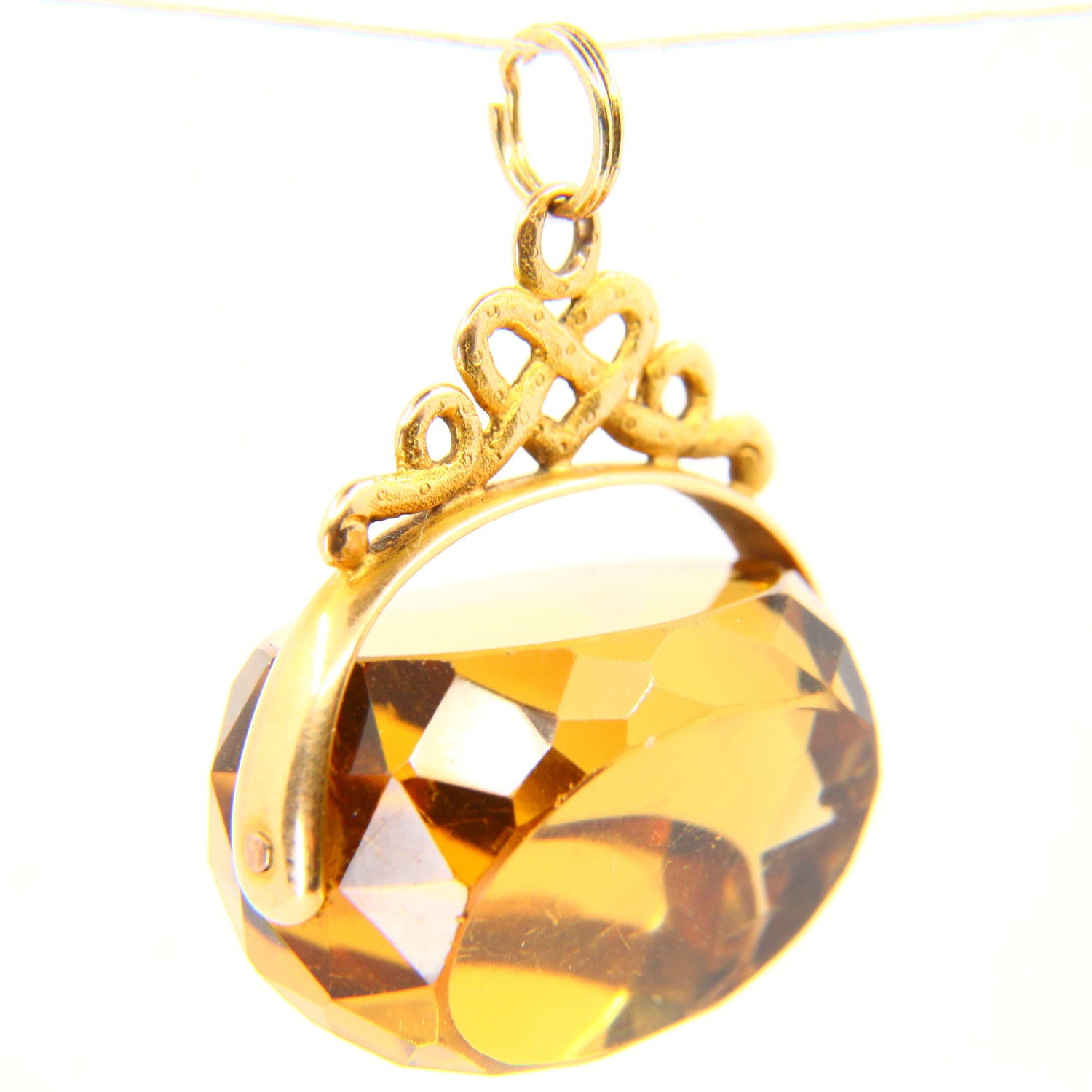
Spinner Pendants
Shop Antique and Vintage Spinner Pendants or Charms.
-
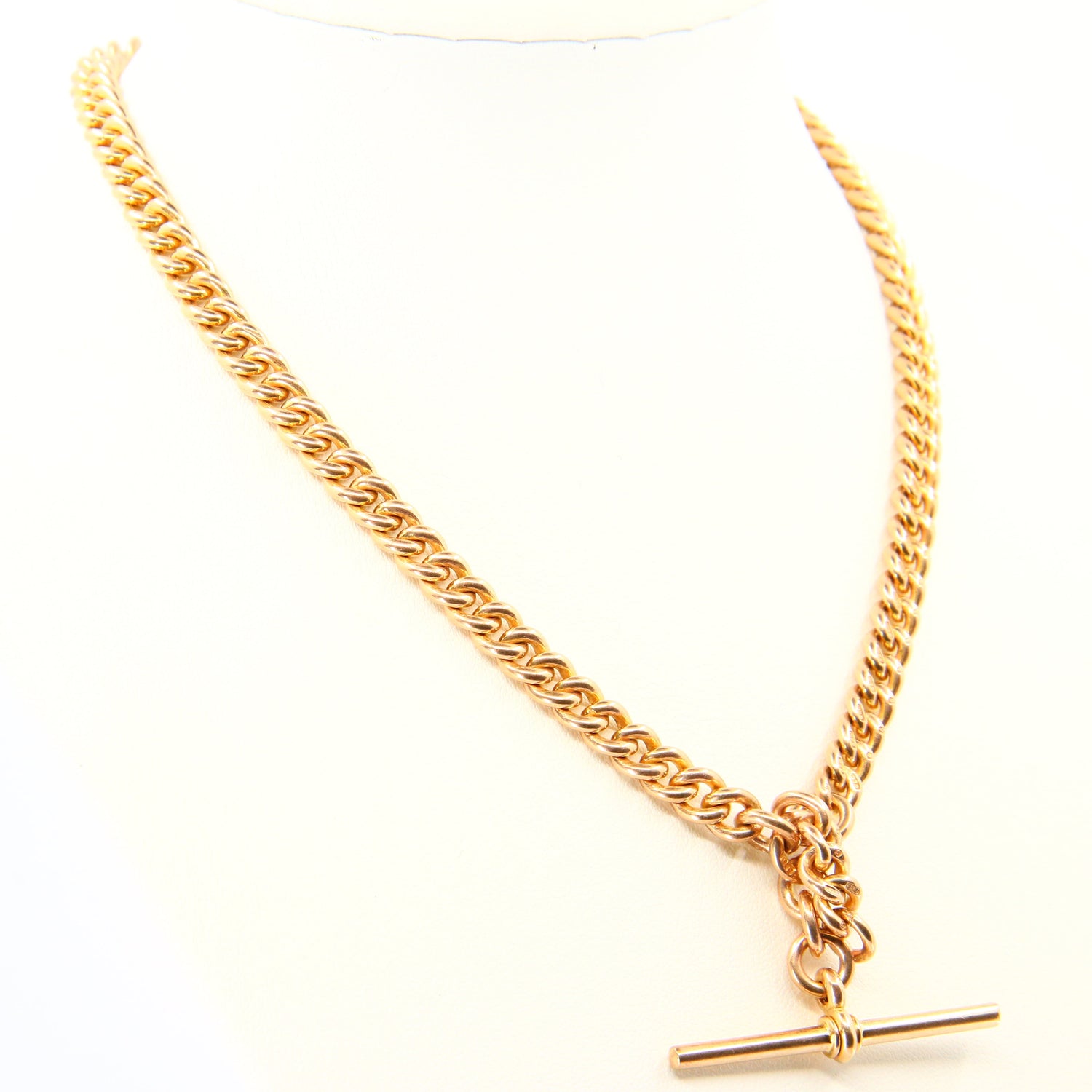
Watch Chain Necklaces
Shop Vintage and Antique Watch Chain Guard Necklaces.
What’s the Difference Between Antique and Vintage Jewellery?
- Antique: Jewellery over 100 years old. This includes items from the Georgian (1714–1830), Victorian (1837–1901), Edwardian (1901–1910), and early 20th century periods.
- Vintage: Typically refers to pieces at least 20–30 years old, often spanning the Art Deco, Retro (1940s), and Mid-Century Modern eras.
Collectors often focus on the craftsmanship, materials, and historical significance — which is especially rich in the British tradition.
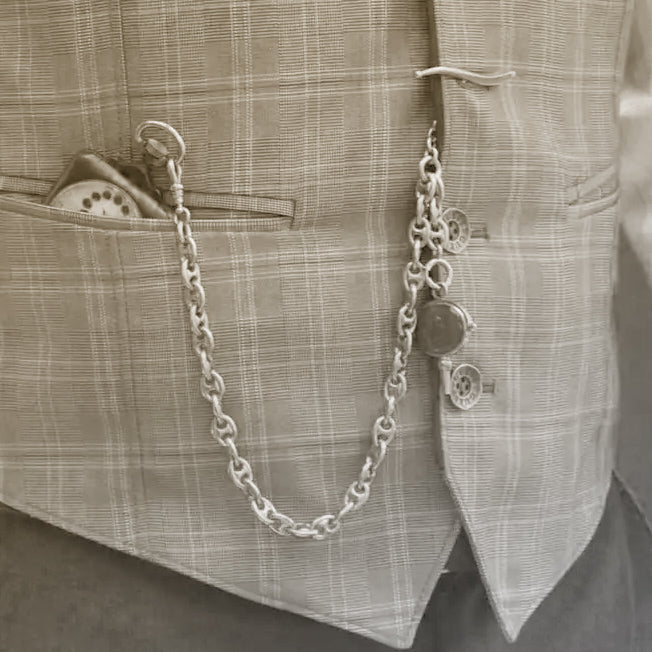
Albert Chains & Watch Guard Chains
Named after Prince Albert, consort of Queen Victoria, Albert chains became popular in the mid-1800s as functional yet decorative accessories for pocket watches. Worn across a gentleman’s waistcoat, they offered both style and security.
- Single Albert: One chain from the T-bar to the pocket watch.
- Double Albert: Two symmetrical chains from the T-bar to pockets on either side, with a drop for a fob or charm in the centre.
- Ladies’ Albertinas: Often finer, shorter, and more decorative, with ornate links, tassels, or lockets.
Materials include 9ct gold, rolled gold, silver, and gunmetal. These chains are now often repurposed as bracelets or necklaces, retaining their rich visual appeal.
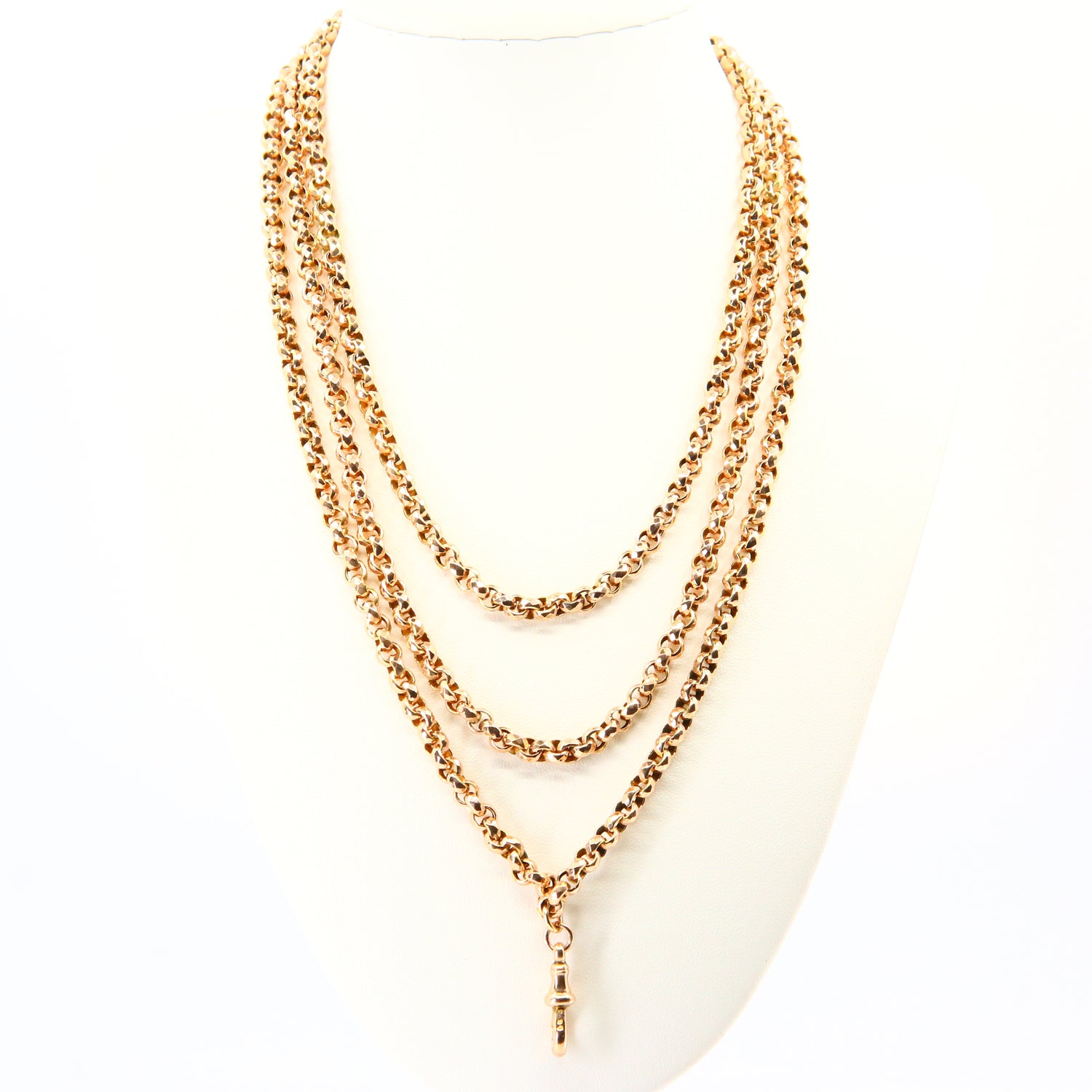
Muff Chains & Opera-Length Necklaces
Muff chains were long, often lightweight chains worn around the neck, with each end clipped to a fur hand muff to keep it from being dropped.
These evolved into opera-length chains, worn as dramatic fashion statements by late Victorian and Edwardian women.
Typical features:
- Lengths over 30 inches
- Fine belcher, rope, or trombone links
- Crafted in 9ct gold, rolled gold, or silver-gilt
They pair beautifully with high-neck Victorian blouses, and today are ideal for layering or wearing as a single long statement necklace.
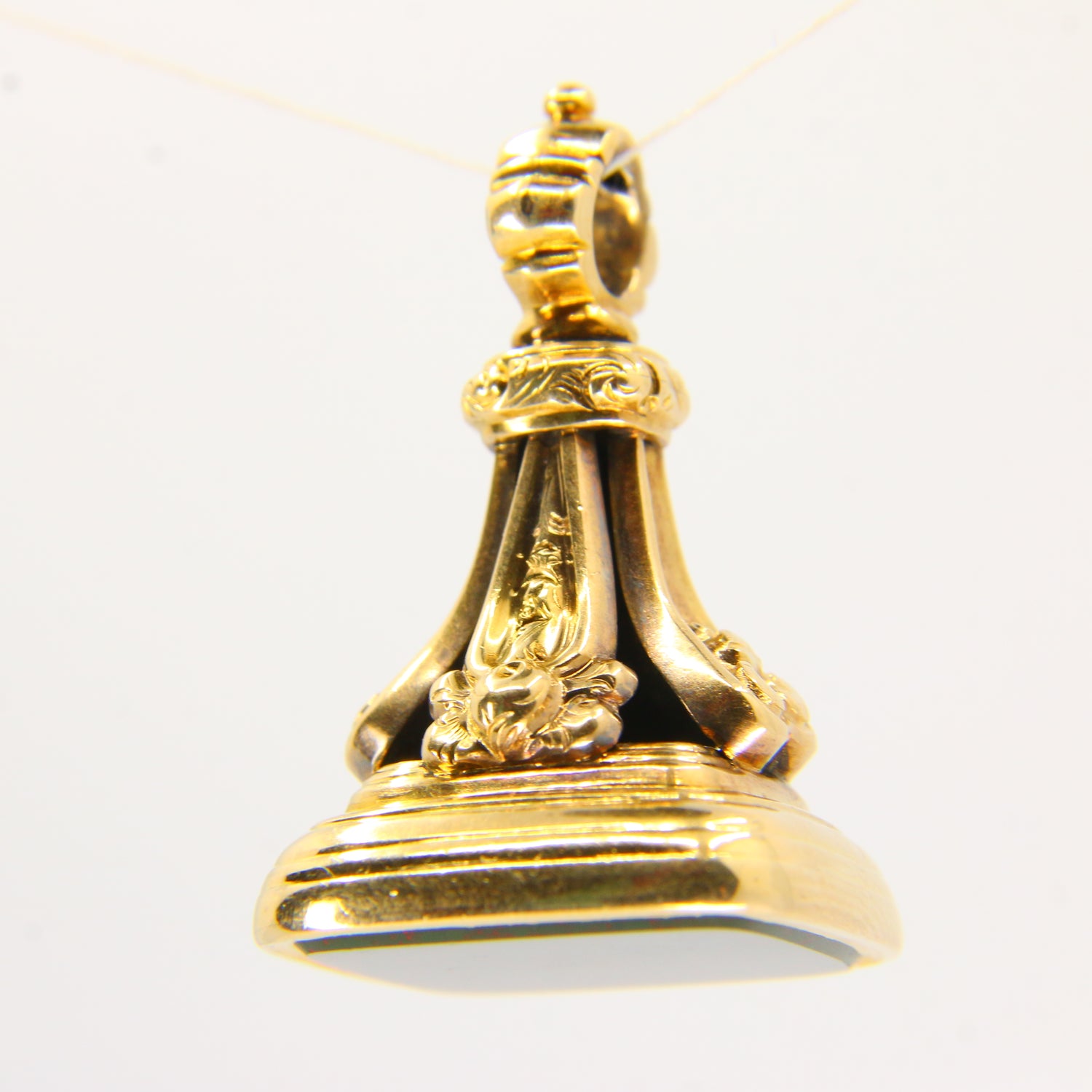
Watch Fobs and Charms
Watch fobs were decorative or practical items suspended from Albert chains, often passed down as heirlooms or gifts.
Common examples include:
- Seal fobs with carved bloodstone or carnelian, used to seal letters with wax
- Spinner fobs featuring rotating gemstones
- Compasses, lockets, medallions, and masonic symbols
By the early 20th century, fobs gradually gave way to charms, used more ornamentally and worn on bracelets. Collectors now treasure these tiny artefacts for their individuality and symbolism.
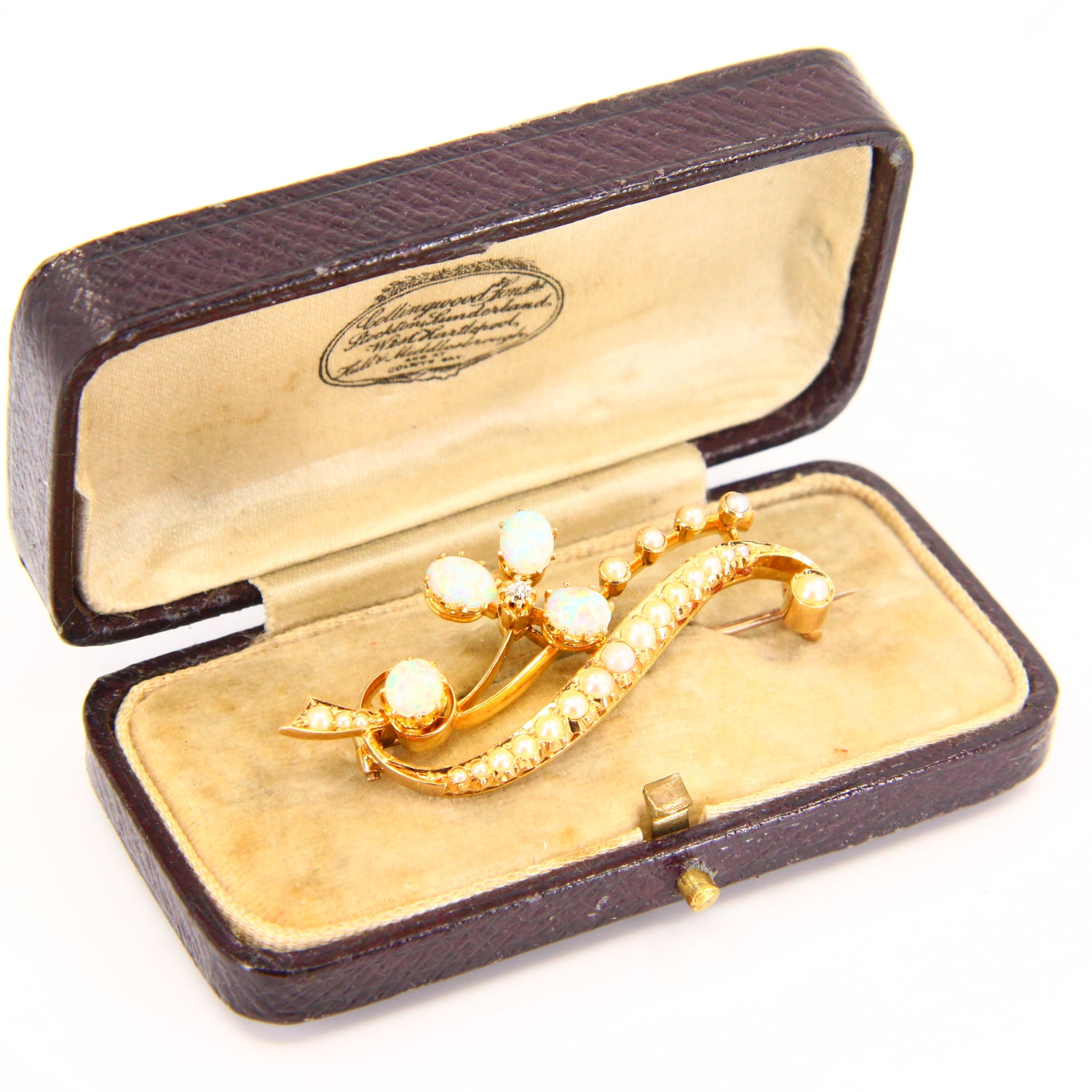
Victorian and Edwardian Brooches
Brooches were an essential part of 19th-century dress, used both decoratively and symbolically.
- Bar brooches, crescent moons, and star motifs were popular in Edwardian times
- Mourning brooches featured hair, portraits, or inscriptions
- Love token brooches bore messages like "Regard", "Dearest", or "In Memory Of"
Crafted in gold, silver, or cut steel, brooches were often set with seed pearls, garnets, turquoise, or jet from Whitby — especially for mourning wear.
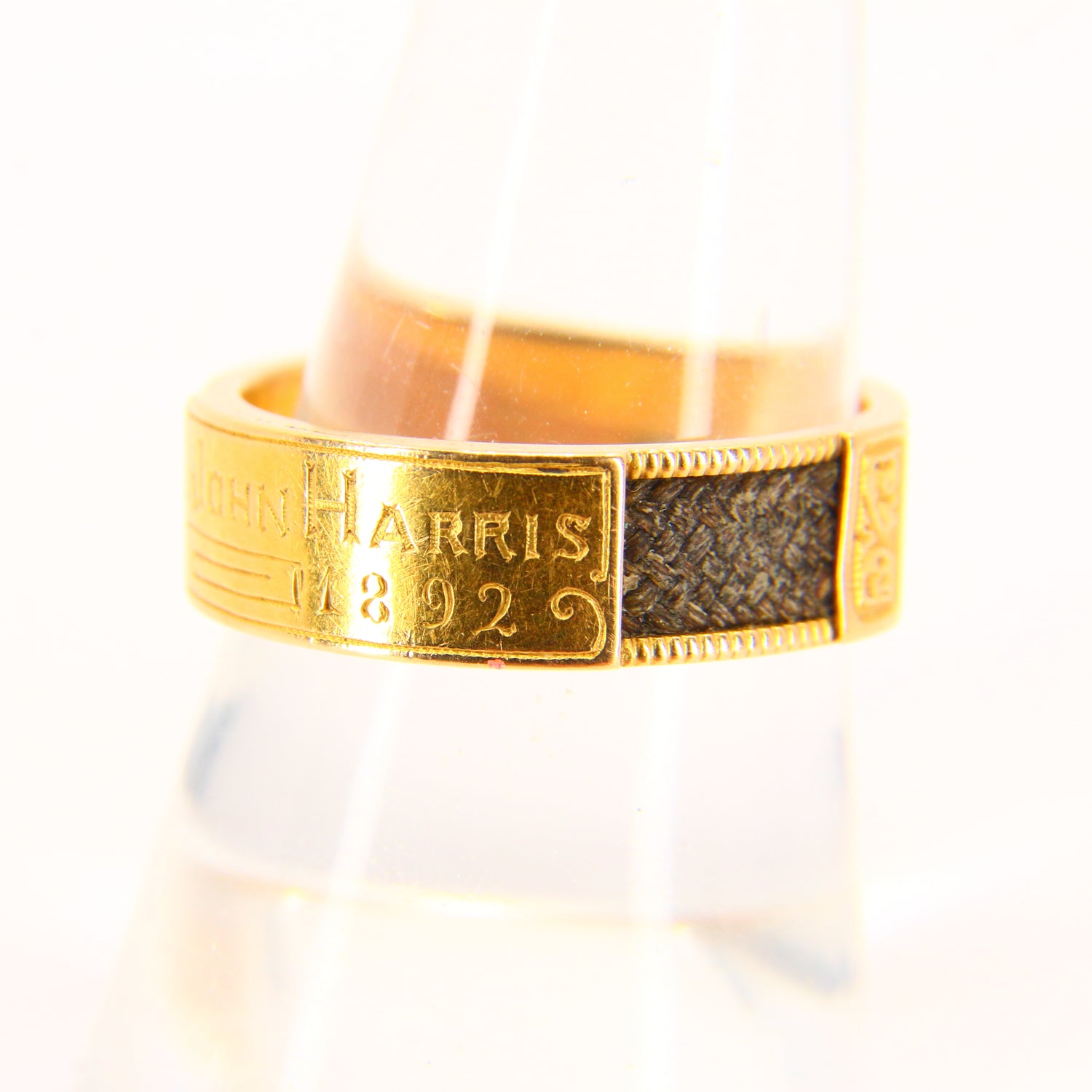
Mourning Jewellery & Hair Work
No guide to antique jewellery is complete without a look at mourning jewellery, particularly significant during the Victorian era, when public grieving followed strict etiquette.
Mourning jewellery was created to commemorate lost loved ones, often using deeply symbolic motifs:
- Black enamel for mourning
- Seed pearls to represent tears
- Urns, weeping willows, hourglasses, and skulls for memento mori
Most poignant is hair work jewellery — incorporating the hair of the deceased into plaits, curls, or woven patterns inside lockets, rings, and brooches. This practice combined artistry and sentiment, often with personalised inscriptions or miniature portraits.
Today, these items remain some of the most moving and intricately made pieces of 19th-century jewellery.
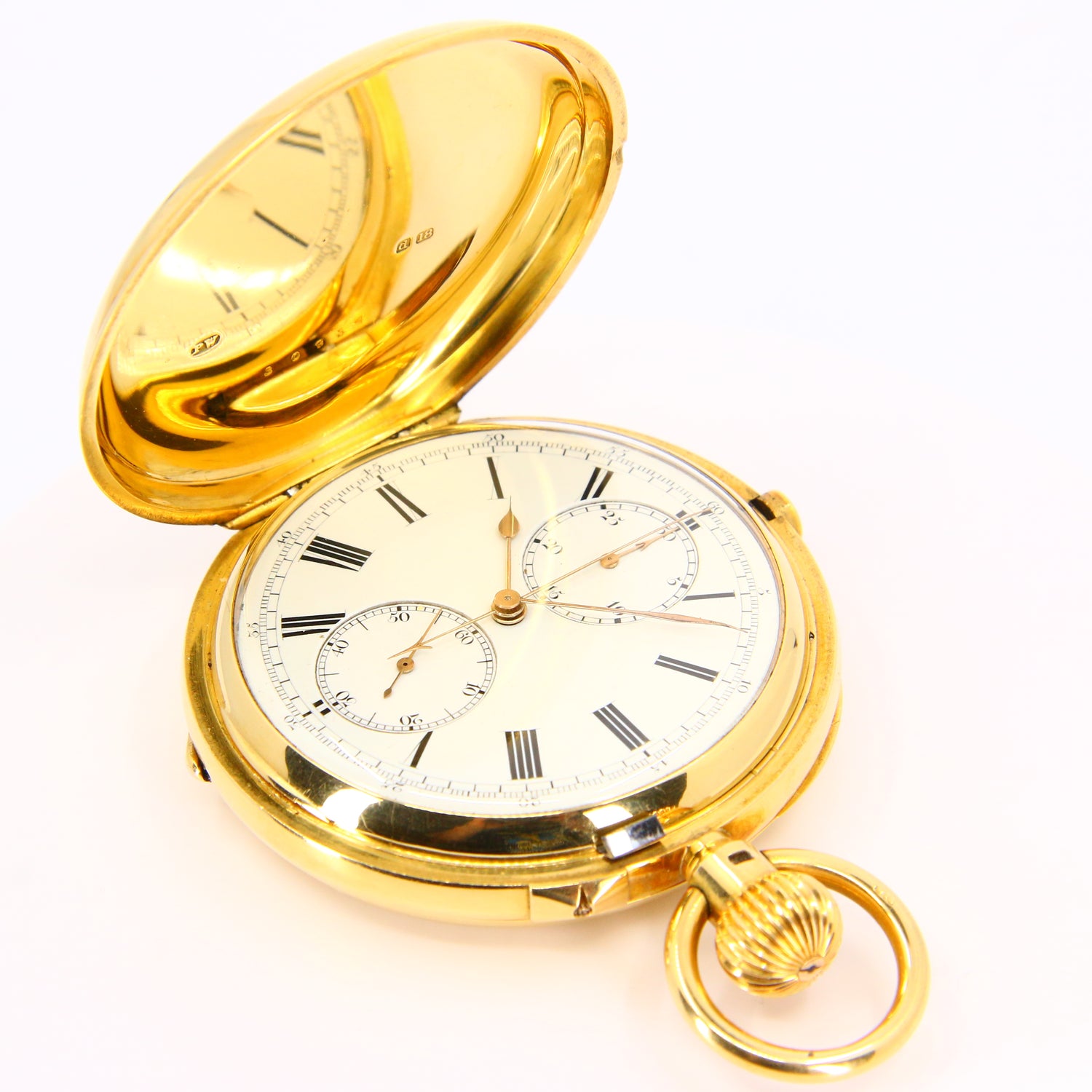
Pocket Watches: Utility and Status
For men (and many women) from the 18th to early 20th centuries, the pocket watch was both a practical timekeeper and a symbol of status. Worn in a waistcoat pocket and secured with an Albert chain, pocket watches came in many styles—from simple open-face designs to ornate hunter-case models. Often crafted from gold or silver and sometimes engraved or decorated, these watches were prized possessions that reflected a wearer’s taste and social standing.
Worn in a waistcoat pocket and secured with an Albert chain, pocket watches came in a wide range of styles:
- Open-face or hunter-case designs
- Gold, silver, or gunmetal casings
- Often engraved, engine-turned, or monogrammed
Many British pocket watches were made in Birmingham, London, and Liverpool, or imported from Swiss makers and re-cased locally. They were passed down through families and often gifted for significant life events — retirement, military service, or weddings.
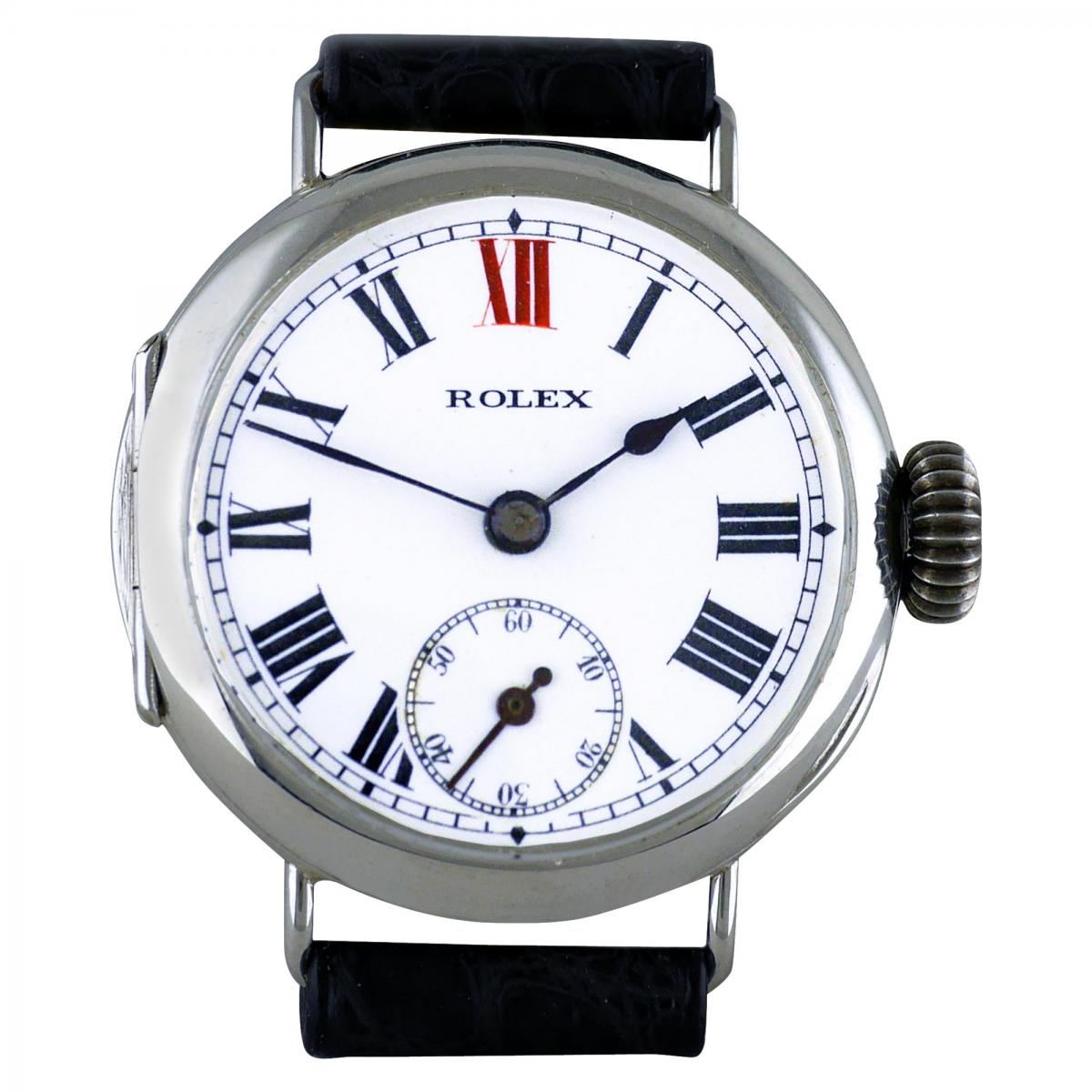
Trench Watches: The First Wristwatches
During World War I, pocket watches proved impractical for soldiers in the trenches. The solution was the trench watch — one of the first true wristwatches for men, adapted from pocket watches with added lugs and leather straps.
Key features include:
- Luminous radium dials for night visibility
- Oversized crowns for use with gloves
- Wire lugs or integrated straps
- Shrapnel guards to protect glass faces
These watches represented a major shift in men’s fashion — from the pocket to the wrist — and are now prized for their rarity and historic importance. British soldiers often returned home with these functional timepieces that went on to define post-war watchmaking trends.
Many trench watches were produced by well-known British and Swiss manufacturers, with brands such as Omega, Longines, Waltham, and Rolex leading the way. British firms like Dennison also played a significant role, often supplying watch cases to Swiss movements. These companies combined rugged durability with precise craftsmanship to meet the demands of wartime service. The quality and innovation of these makers helped trench watches become highly collectible today, treasured for both their historical significance and mechanical excellence.
Wearing and Collecting Vintage Jewellery Today
Modern wearers love antique jewellery for its individuality, craftsmanship, and sustainability. Popular ways to enjoy these pieces now include:
- Wearing Albert chains as necklaces or wrap bracelets
- Layering muff chains for a statement vintage look
- Repurposing fobs and charms as pendants
- Displaying trench watches in shadow boxes or wearing them as conversation pieces
- Collecting mourning jewellery for its historical and emotional depth
Each vintage and antique jewellery piece connects us intimately with the lives, fashions, and sentiments of the past, making them treasured additions to any collection. Whether worn daily or kept as heirlooms, these timeless treasures celebrate British heritage and the artistry of bygone eras.

Explore Our Curated Collection of Vintage & Antique Jewellery
Explore our extensive collection of exquisite Fine Jewellery & Clocks from across the globe.
Established 1976.
Family Run, Small Business, Free UK Shipping
At Ian Burton Antiques, we specialise in sourcing and offering genuine vintage and antique jewellery from across the United Kingdom and beyond. With over 48 years of experience in the trade, our family-run business is dedicated to preserving the history, beauty, and craftsmanship of every piece we offer.
Our collection ranges from rare Albertina chains and timeless pocket watches to exquisite Art Nouveau brooches and heartfelt Victorian mourning lockets. Each item is hand-picked for its authenticity, condition, and character — ensuring you receive jewellery that is not only beautiful but also steeped in history and ready to be treasured for generations.
We pride ourselves on quality and trust. Every piece in our inventory is professionally tested, cleaned, and carefully described with detailed photography, so you can shop with confidence. Based in Stirlingshire, Scotland, we provide free UK shipping and offer secure worldwide delivery, with same-day dispatch where possible.
Whether you’re an avid collector, a first-time buyer, or searching for a meaningful gift, our curated vintage jewellery collection invites you to discover unique treasures that connect you with the elegance and stories of a bygone era.
Thank you for taking the time to explore our collection. If you have any questions or need more information, please don’t hesitate to contact us — we’re here to help and would love to assist you in finding the perfect piece.
Browse our vintage jewellery collection today and find a true piece of history waiting to be worn again.
Watch Guard Chains:
-
Antique 18ct Gold Two Tone Albert Chain Bar Link 14.5 Inch
Normaler Preis £1,400.00 GBPNormaler Preis -
Antique 18ct Edwardian Fetter Watch Chain Yellow & White Gold 18 Carat Gift
Normaler Preis £1,200.00 GBPNormaler Preis -
Antique 18K Gold 3.5 Inch Part Albert Chain With Clasp & Ornate Swivel T-Bar
Normaler Preis £1,400.00 GBPNormaler Preis -
Antique 18ct Hallmarked Gold Pocket Watch Albert Chain 14 Inch Yellow Gold Gift
Normaler Preis £2,200.00 GBPNormaler Preis
Watch Chain Fobs:
-
Antique 9ct Yellow Gold Bloodstone Carnelian Swivel Watch Key Pendant Fob Charm
Normaler Preis £170.00 GBPNormaler Preis -
Antique Large 9ct Gold Hallmarked Bloodstone Carnelian Spinner Pendant Charm
Normaler Preis £450.00 GBPNormaler Preis -
Vintage 9ct Hallmarked Gold Spinner Pendant Bloodstone Carnelian Fob Charm Gift
Normaler Preis £560.00 GBPNormaler Preis -
Vintage 9ct Hallmarked Gold Spinner Pendant Pearl Charm Fob Ornate Gift
Normaler Preis £460.00 GBPNormaler Preis
Brooches & Pins:
-
Vintage 14K Queen Bee Brooch Blue Sapphire & Yellow Gold Insect Brooch Boxed Gift
Normaler Preis £475.00 GBPNormaler Preis£540.00 GBPVerkaufspreis £475.00 GBPAusverkauft -
Antique 9ct Gold Half Sovereign Coin Frame Brooch with Safety Chain
Normaler Preis £220.00 GBPNormaler Preis -
Vintage 9ct Hallmarked Gold Rennie Mackintosh Brooch Yellow Gold Boxed Gift
Normaler Preis £560.00 GBPNormaler Preis -
Vintage 18ct Gold Italian Cat Brooch 18k Yellow Gold Coral Ruby Eyes
Normaler Preis £720.00 GBPNormaler Preis
What Our Customers Say:
-
Michele on 29 Jun, 2025
"Really pleased with this purchase. It is a beautiful peace, very unusual and lovely to wear. Arrived in 2 days so excellent service."
-
Chimay on 18 Jun, 2025
"Love this spinner fob! Exactly as described and very beautiful."
-
Hannah on 16 Jun, 2025
"Such quick shipping for an exquisite little piece. The perfect vintage addition for my daily paperclip choker."



